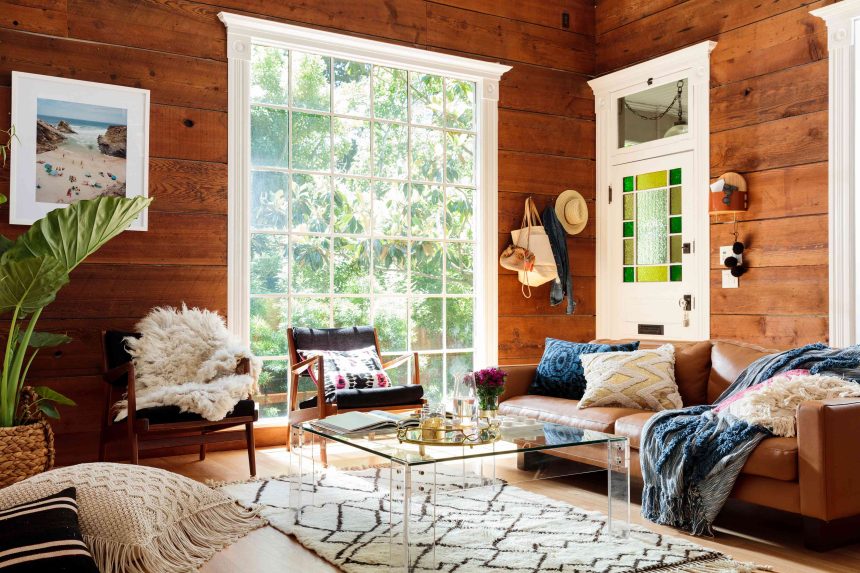In the early aughts, minimalism and cool tones like gray and stark white reigned supreme. But today, personal touches and a yearning for coziness are warming up homes. Consider drenching your space with the natural textures and the warming hues found in wood with one of the top interior design trends: wood drenching.
This technique—the process of using wood tones, and particularly paneled walls or ceilings, to create a room enveloped in wood—is one of 2025’s biggest trends. The result is the comfy space of your dreams, a place to hide away with a book and a blanket. To avoid a paneled room that brings back memories of 1970s suburban basements, we gathered experts’ advice for pulling off wood-drenched rooms.
What Is Wood Drenching?
“Wood drenching is essentially wrapping a room in wood by incorporating hardwood floors, wood paneling on the walls or ceiling, and using warm, rich, wood furnishings in the space,” says Debbie Mathews, founder and principal designer of Debbie Mathews.
While you don’t need to do all of the above (baby steps!), the idea is to create a cozy wood-infused space that brings warmth and nature to the forefront of your room’s design. Much like color drenching, wood drenching is a bold, statement-making choice that anchors the rest of the interior’s design.
Jean M. Allsopp
Why Wood Drenching Is Trending in 2025
Much of wood drenching’s popularity comes down to the natural evolution of trends: After years of cool neutrals saturating homes, warm and cozy tones have taken over, culminating in Pantone choosing Mocha Mousse as its 2025 Color of the Year.
Many folks are also prioritizing the environment and making an effort to connect with it through intentional design choices.
“I think people are wanting natural materials that help bring the outdoors inside,” says Liz Williams, founder and interior designer at Liz Williams Interiors. “Using reclaimed or responsibly-sourced wood is eco-friendly.”
How to Know if You Should Try Wood Drenching in Your Home
According to Williams, wood drenching works with all kinds of design. So if you like this one, you can definitely find a way to add it to your home.
However, adding actual wood walls, floors, or a beamed ceiling to your space is a costly and fairly-permanent renovation. It’s not ideal for renters or those who are on a strict budget—or those who regularly like updating their spaces with the newest trends.
If you’re looking for smaller and simpler options for trying out wood drenching, use peel-and-stick wallpaper to create a faux-paneled look or rely on wooden furniture and details like large wooden bowls to bring in the same feeling of warmth without the price tag and commitment.
Introducing Wood Paneling in Your Home (and Making it Modern)
The last thing when you renovate is for your home to appear more dated than it was before. But when done right, wood can feel contemporary, whether you’re working with existing pieces or installing new materials.
“Wood paneling can feel current and modern with just a few simple tips,” Mathews says. “Many of us remember the dark paneling of the 1970s, and I’ve advised many of my design clients to simply paint this paneling to make it lighter and updated. But when installing new paneling, there are so many options including waxing, white washing, or bleaching that makes it feel light and fresh.”
How (and where!) you place the wood can dramatically affect how feels in your space, too. Mathews suggests playing around with the width of the wood panels, installing them vertically or horizontally, or adding them to the ceiling. In several projects, she says she’s installed paneling at wainscoting or shoulder-height.
You can also modernize your wood-drenched room by using contrasting wood tones—though that sometimes comes with its own challenges.
“Mixing different woods can be tricky, but when done thoughtfully, it can create a harmonious, layered look,” Williams says. “Keep a consistent undertone throughout, whether warm or cool. Balance lighter and darker woods so that things don’t feel too matchy.”





